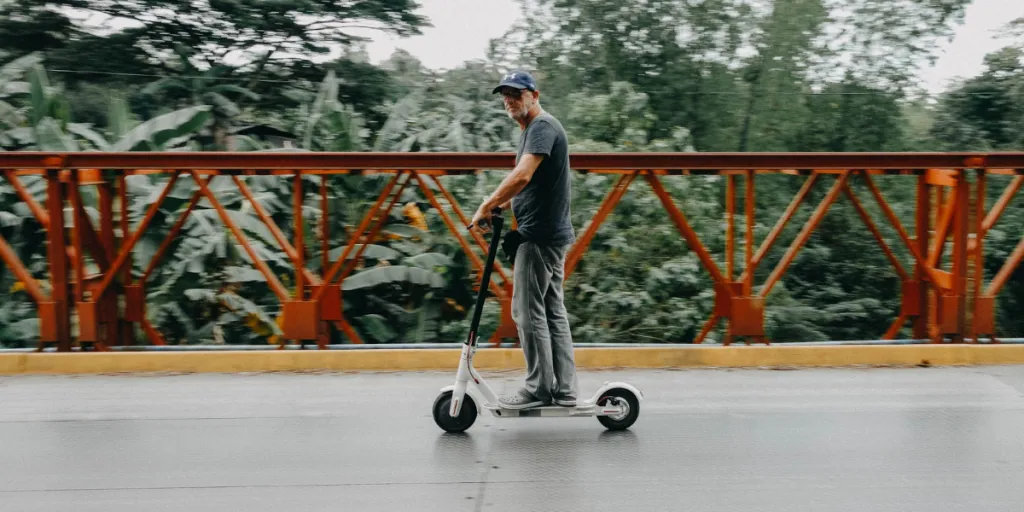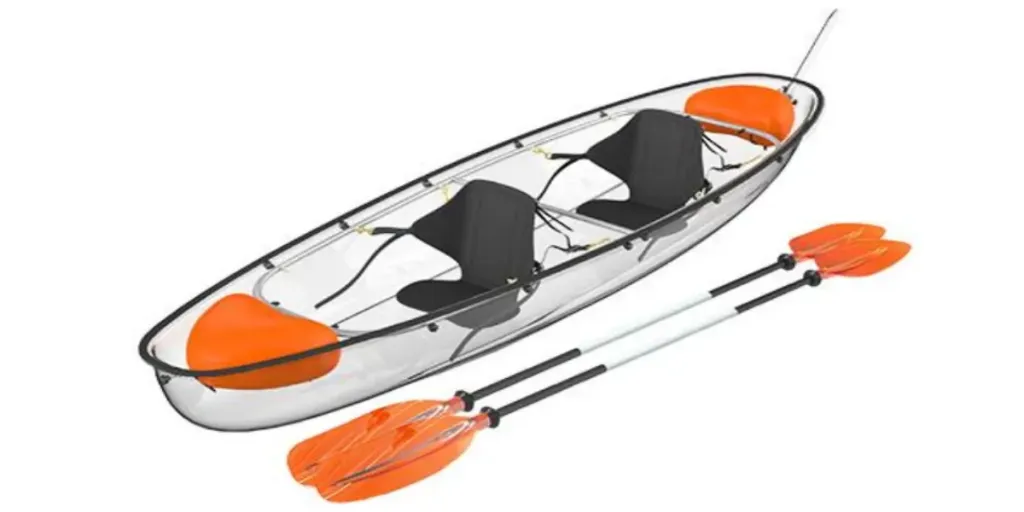Electric scooters are a transportation trend that is catching on globally. Consumers love e-scooters for their affordability, easy maneuverability, and space-saving designs. This booming market offers a great opportunity for retailers, especially for those who can supply quality scooters that are targeted to their buyer’s needs.
However, choosing electric scooters can be challenging with the number of options available today. That’s why this article aims to walk businesses through everything they need to consider to ensure they are adding the best electric e-scooters to their inventories.
Table of Contents
Why are electric scooters dominating consumer interest?
Is the electric scooter market set to remain profitable in the future?
Key considerations for choosing electric scooters in 2024
Final words
Why are electric scooters dominating consumer interest?

Electric scooters are grabbing everyone’s attention for some pretty cool reasons. For one, these scooters won’t break the bank. Businesses can offer cheaper options for as low as US$ 400 or stock up on more advanced variants to sell at US$ 3000.
The end game is that e-scooters are significantly cheaper than cars or motorcycles, appealing to budget-conscious consumers. Moreover, the affordability extends to additional costs like tax, MOT, and insurance.
And that’s why so many people love e-scooters, which has translated into a great deal of consumer interest. This can be seen, for example, by 1.36 million searches for e-scooters in November 2023, based on Google Ads data.
Is the electric scooter market set to remain profitable in the future?
The global electric scooter market, estimated at US$ 33.18 billion in 2022, is on a promising trajectory. Experts say the market is poised to grow at a steady 9.9% compound annual growth rate (CAGR) from 2023 to 2030.
Primarily, the rising demand for fuel-efficient vehicles and heightened concerns about Greenhouse Gas (GHG) emissions are key drivers pushing the market forward. Electric scooters’ mechanical efficiency and low maintenance costs propel their demand and adoption.
Here are other important stats to note:
- Based on the market’s end-use breakdown, personal use dominates, accounting for 68.85% of overall revenue.
- Asia Pacific leads the market, accounting for over 74.85% of the global revenue.
Key considerations for choosing electric scooters in 2024
Rider weight
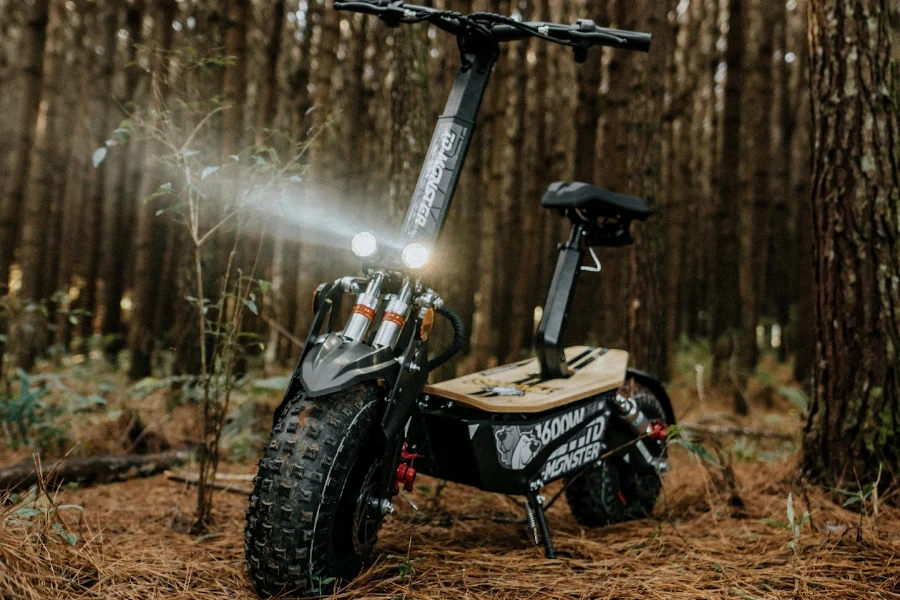
E-scooters have a max rider weight or max load they can support. Most scooters can take anywhere from 220 lbs to 300 lbs. But there’s no need to worry if target consumers weigh more than that. Sellers only have to ensure the scooter they offer can handle the extra load.
Excessive weight on scooters that can’t support it causes various issues. First, the vehicle will be slower and cover less range than a lighter ride. And the extra weight will force the motors, batteries, and other components to work extra hard, leading to quick wear and tear or premature damage.
Note: Since most e-scooters only support 220 lbs to 300 lbs, businesses prioritizing consumers above that weight should focus on variants with a 500-watt motor minimum. They’ll have enough power to keep the extra weight and carry more load.
Weight and portability

Portability is a big deal for e-scooters—it’s not just about how well they fold up but how easy they are to move around when not riding. Consumers should be able to give it a lift or push if the situation calls for it.
Scooters with a decent range (more than 15 miles) may get a bit hefty for consumers, usually tipping the scale over 25 lbs. But if things go over the 30 lbs mark, carrying such scooters for a while may be a bit of a workout for consumers. Thankfully, some variants come with handles or shoulder straps to make them easier to lug.
But that’s not all. Retailers can also find scooters with extra wheels or folded configurations, allowing consumers to roll them like compact, commuter-friendly luggage. As a rule of thumb, the recommended scooter shouldn’t exceed 30% of the target consumer’s body weight.
Suspension
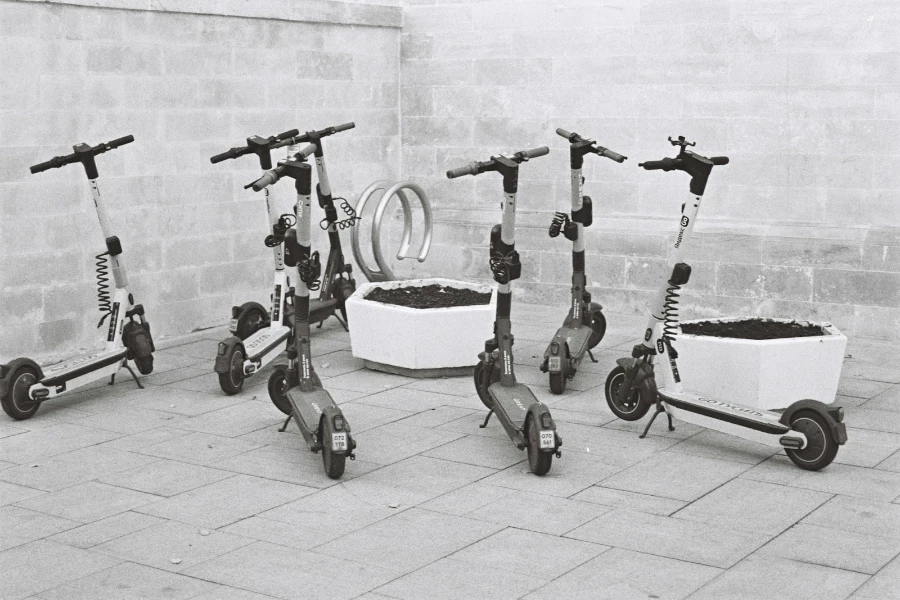
Electric scooters’ Suspension is like shock absorbers in cars—it smooths out bumps and enhances the overall ride quality. E-scooters can have three suspension systems: spring, hydraulic/air piston, and rubber.
Spring suspension is the most basic system, using a coil spring to absorb bumps. Manufacturers use these suspension systems on lighter and affordable scooters—but they will offer less cushioning.
Although pricier, hydraulic or air piston suspensions provide better cushioning and performance. Hydraulic ones use oil-filled cylinders to absorb shock, while air piston suspension uses air pressure instead.
Lastly, rubber suspensions use elastomer components to absorb shock and vibration. They can be stiff, but consumers can adjust them by swapping rubber cartridges for softer ones.
Note: Suspension is particularly important if target consumers frequently ride on rough terrains. To offer consumers the best experience, look for models offering a spring and hydraulic/air piston system combo.
Brakes
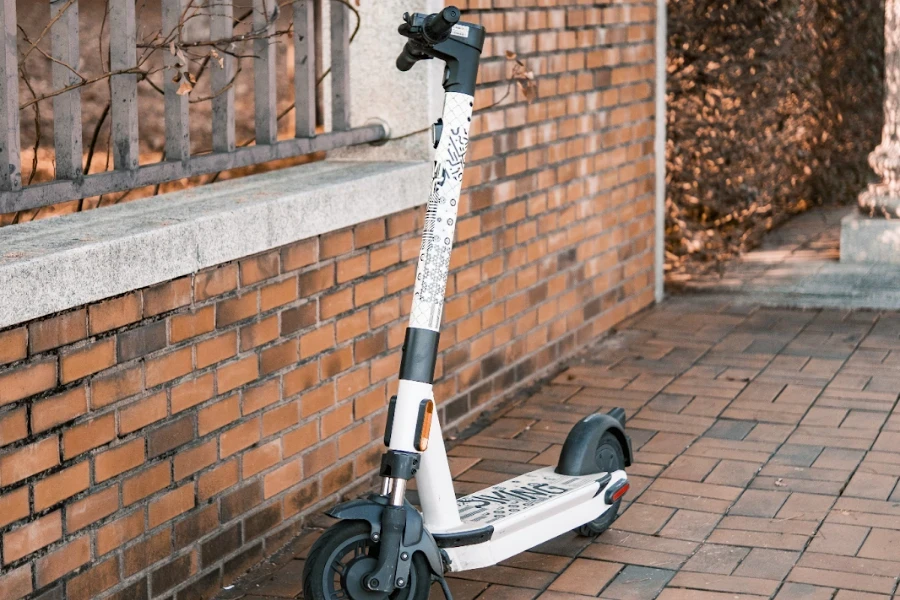
A reliable braking system is crucial for safety and control when riding an electric scooter. Usually, businesses can choose between two brake systems when purchasing electric scooters: mechanical and electronic.
Mechanical systems, including foot, drum, and disc brakes, rely on physical mechanisms for slowing down. In real-world tests, disc and drum brakes emerged as the most effective systems on e-scooters.
In contrast, electronic brakes use motors to slow or stop scooters. While they sound less stressful than their mechanical cousins, they’re weaker and unsuitable for quick stops at speeds above 15 mph.
Tire size
Electric scooters have tires with various sizes ranging from 16 to 6 inches. 6-inch wheels are more common on kids’ scooters, but 8.5 inches is the standard size for entry-level variants.
Generally, bigger wheels offer increased stability and roll over obstacles without jolting the rider. However, consumers may prioritize portability over performance, meaning they’ll stick to smaller wheels.
Businesses can stock up on scooters with 8.5-inch wheels if their consumers fall under the portability category. Such wheels are the go-to lightweight scooter, and they don’t sacrifice a lot of stability.
Nevertheless, retailers will see more success with scooters featuring larger wheels (10 inches or more) if target consumers want maximum performance, better handling, and off-road capabilities.
IP rating
If businesses want the e-scooters they sell to work in all weather conditions, they must pay attention to their IP ratings. The two numbers indicate how well the vehicle can handle moisture and dust. Usually, high numbers mean better protection from dust, water, and splashes.
Here’s a table showing all the IP ratings for scooters and what they mean:
| IP rating | Suitable condition |
| IP67 | Protection from all terrain and heavy, constant rain with some immersion. |
| IP65 | Protection from all terrain and light, constant rain/puddles. |
| IP55 | Can handle off-road conditions and light, constant rain/puddles. |
| IP54 | Can handle off-road conditions and damp grounds. Light, infrequent showers also won’t be a problem. |
| IP34 | Can handle dusty or rocky roads or damp ground. Won’t receive damage from light, infrequent showers. |
| IPX5 | Can only withstand light, constant rain, and puddles. |
| IPX4 | Will work fine on damp ground, mist, and fog. Can also handle infrequent showers. |
| None | No water resistance and protection from wet conditions. |
Final words
Consumers are interested in purchasing e-scooters for a number of reasons. They may want them for fun rides around their community or as a more convenient method for their daily commute.
Regardless of the purpose, businesses should make a few key considerations before selling electric scooters. Once retailers consider the factors discussed in this article, it’ll be easier to help their buyers to find the best electric scooter for their needs, and to ensure their buyers have a well-informed shopping experience.
